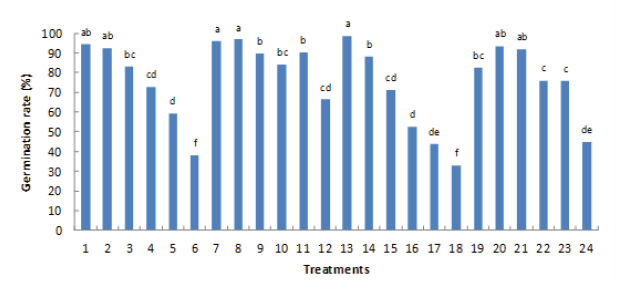Abstract
The research was initiated to investigate the effects of inorganic materials on the growth of perennial ryegrass (PR) and to provide fundamental information on turfgrass establishment applicable to school grounds, soccer fields and golf courses. A total of 24 treatment combinations were prepared for the experiment, being made of water-swelling polymer (WSP), calcium, chitosan and perlite in mixtures of soil organic amendment (SOA) 15% and sand 85% (v/v). Significant differences were observed in seedling survival, turfgrass coverage, turfgrass density and top growth among the treatments. An optimum WSP rate was considered to be less than 3% for turf coverage and density in PR. It was, however, to be below 6% for seedling survival and top growth. Among calcium, chitosan and perlite elements, seedling survival was greatly promoted by calcium and chitosan. But there was little effect by perlite. Calcium was the most effective for turfgrass density and coverage in the study. Top growth was promoted by both calcium and chitosan, but the chitosan was becoming more effective in a later growth stage. As compared with calcium and perlite, the chitosan element was more effective in seedling emergence in early establishment stage as well as vertical leaf growth. However, our research condition was not the same as that of the practical turfgrass fields in terms of growth and management conditions etc. Therefore, further field studies are needed for practical application to parks, soccer fields and golf courses.
Figures & Tables

Fig. 1. Germination rate in perennial ryegrass as aff ected by inorganic materials in mixtures of SOA 15% and sand 85% (v/v). Treatment information was described in Table 1. Mean separation was made by Dun- can's multiple range test at P=0.05.


